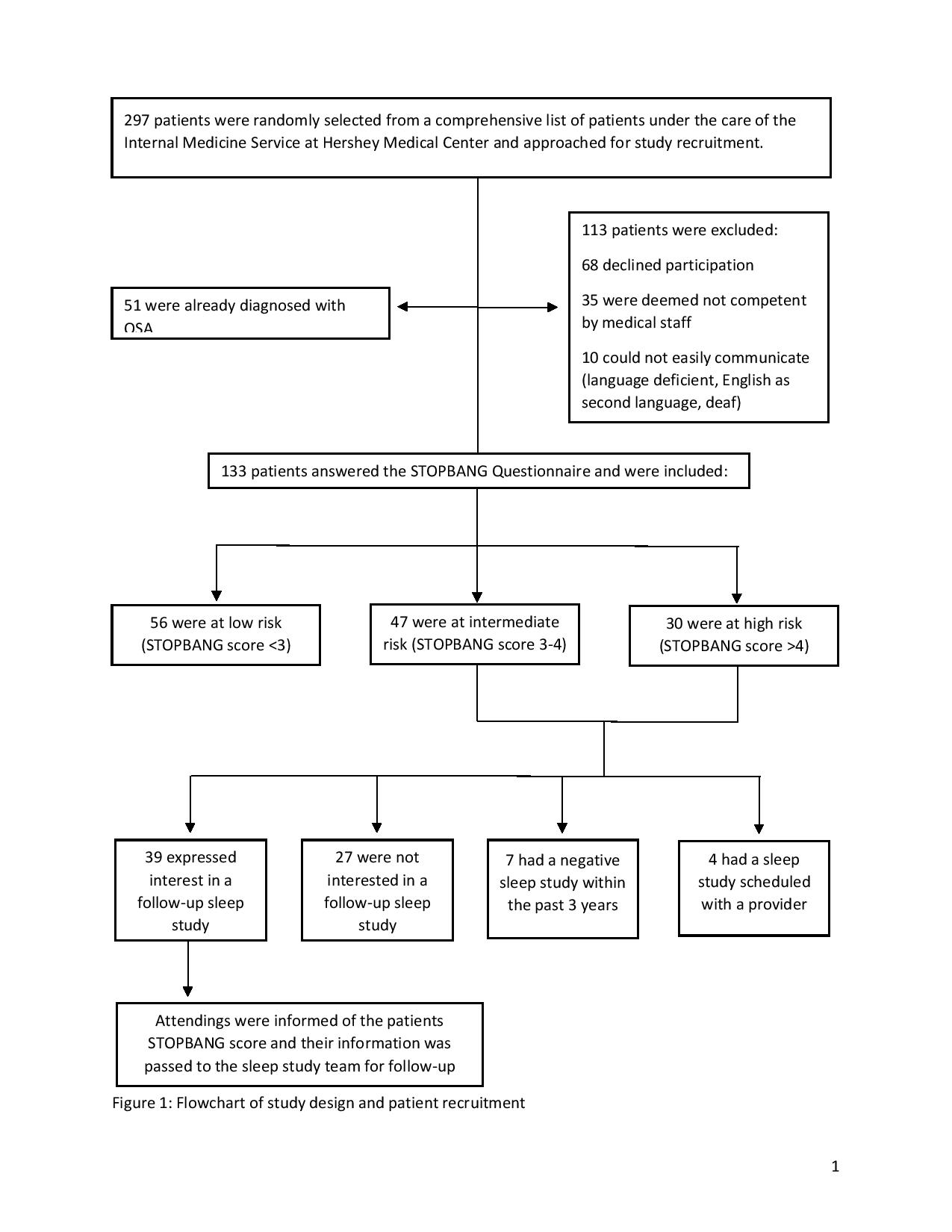Background: Obstructive sleep apnea (OSA) is defined as a sleep disorder marked by pauses in breathing of 10 seconds or more causing unrestful sleep and accompanied by loud or abnormal snoring, daytime sleepiness, irritability, and depression. According to the National Sleep Foundation, more than 18 million Americans have OSA, 80% of whom are undiagnosed. The most prevalent diseases associated with OSA include hypertension, type II diabetes mellitus, congestive heart failure, stroke, and cardiac arrhythmias. Untreated sleep apnea is associated with higher healthcare expenditures and is the 4th most expensive condition behind cancer, diabetes and heart disease. Because undiagnosed obstructive sleep apnea can affect a patient’s quality of life both in and out of the hospital, we decided to screen hospitalized inpatients on the internal medicine service with the validated STOPBANG Questionnaire to promote awareness and intervention post-discharge.
Methods: We conducted a single-center randomized study consisting of adults ages 18 or older who were hospitalized under the Internal Medicine inpatient service chosen daily from a list. 133 patients were administered the STOPBANG Questionnaire after a verbal consent was taken along with explanation of the research study. Based on the results, a score of 3-4 or >4 (indicating intermediate or high-risk) were recommended an outpatient sleep study.
Results: 297 patients were approached. 113 patients were excluded because 35 were not competent to participate, 10 had language barriers and 68 declined to participate. 51 (17%) were already diagnosed with OSA. Of the 133 undiagnosed patients, the average age was 60, 48.1% were male, 42.1%, 35.3% and 22.6% were at low, intermediate and high risk of sleep apnea, respectively. Of the 77 patients at intermediate to high risk, 39 expressed interest in following up with a sleep study (SS), 27 were not interested, 7 had a recent negative SS, and 4 had a scheduled SS already (see Figure 1).
Conclusions: With over 50% of hospitalized inpatients sitting on the inpatient medical floors with moderate to high-risk for obstructive sleep apnea, this could be a microcosm of the other 70 million undiagnosed with sleep disturbances. Because OSA is associated with numerous comorbid medical conditions, it would be valuable to identify and accurately diagnosis such patients. Greater awareness and screening modalities may help the negative health impacts and poor quality-of-life that OSA imposes on patients.

